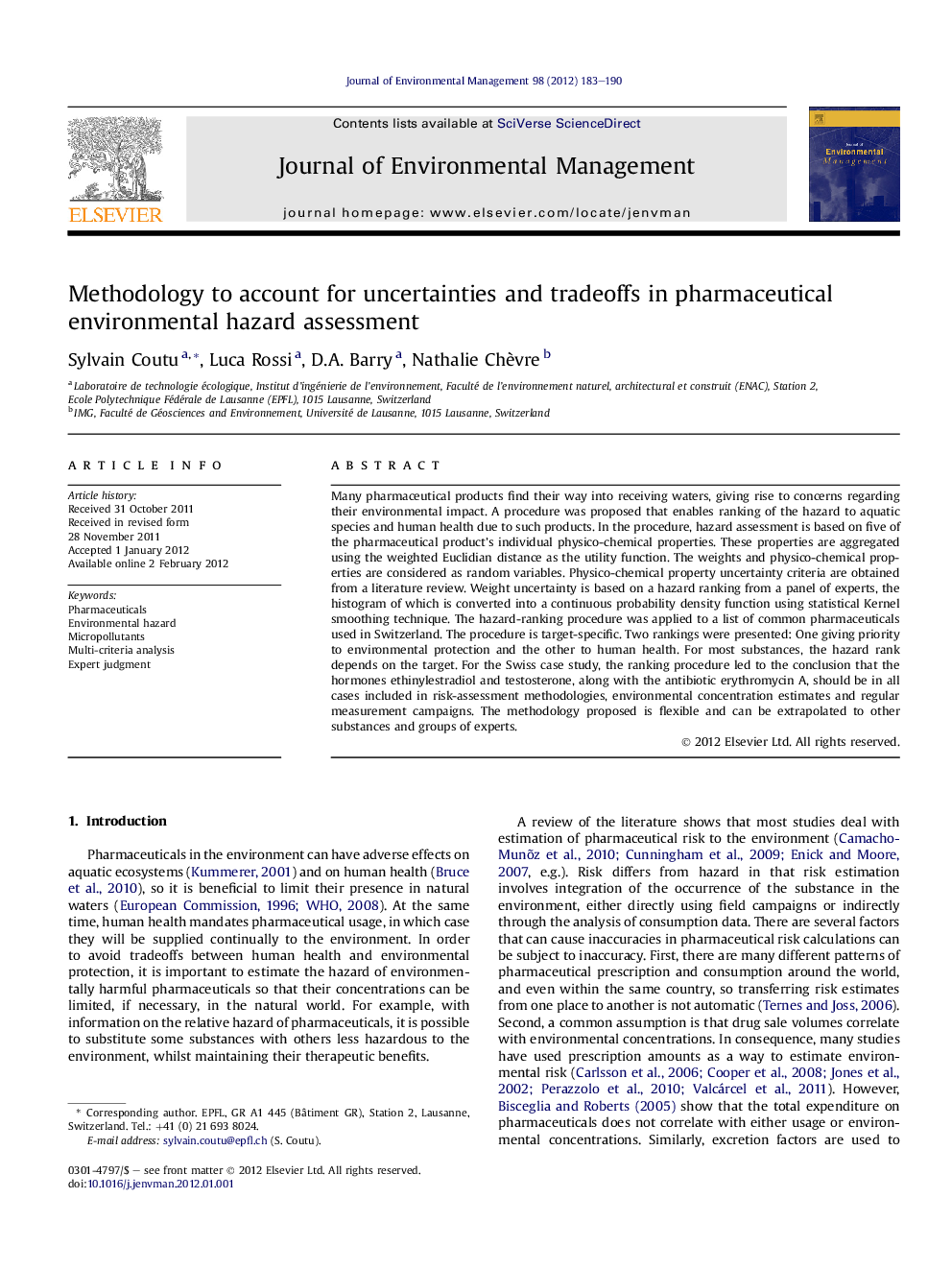| Article ID | Journal | Published Year | Pages | File Type |
|---|---|---|---|---|
| 1056955 | Journal of Environmental Management | 2012 | 8 Pages |
Many pharmaceutical products find their way into receiving waters, giving rise to concerns regarding their environmental impact. A procedure was proposed that enables ranking of the hazard to aquatic species and human health due to such products. In the procedure, hazard assessment is based on five of the pharmaceutical product’s individual physico-chemical properties. These properties are aggregated using the weighted Euclidian distance as the utility function. The weights and physico-chemical properties are considered as random variables. Physico-chemical property uncertainty criteria are obtained from a literature review. Weight uncertainty is based on a hazard ranking from a panel of experts, the histogram of which is converted into a continuous probability density function using statistical Kernel smoothing technique. The hazard-ranking procedure was applied to a list of common pharmaceuticals used in Switzerland. The procedure is target-specific. Two rankings were presented: One giving priority to environmental protection and the other to human health. For most substances, the hazard rank depends on the target. For the Swiss case study, the ranking procedure led to the conclusion that the hormones ethinylestradiol and testosterone, along with the antibiotic erythromycin A, should be in all cases included in risk-assessment methodologies, environmental concentration estimates and regular measurement campaigns. The methodology proposed is flexible and can be extrapolated to other substances and groups of experts.
► Relative hazard of pharmaceuticals is quantified based on physico-chemical criteria. ► The weighting of each criterion is assessed by experts. ► Criteria and weights are associated mathematically using a utility function. ► The methodology produces different rankings for environmental and human hazard. ► Ethinylestradiol, testosterone and erythromycin A are identified as hazardous.
